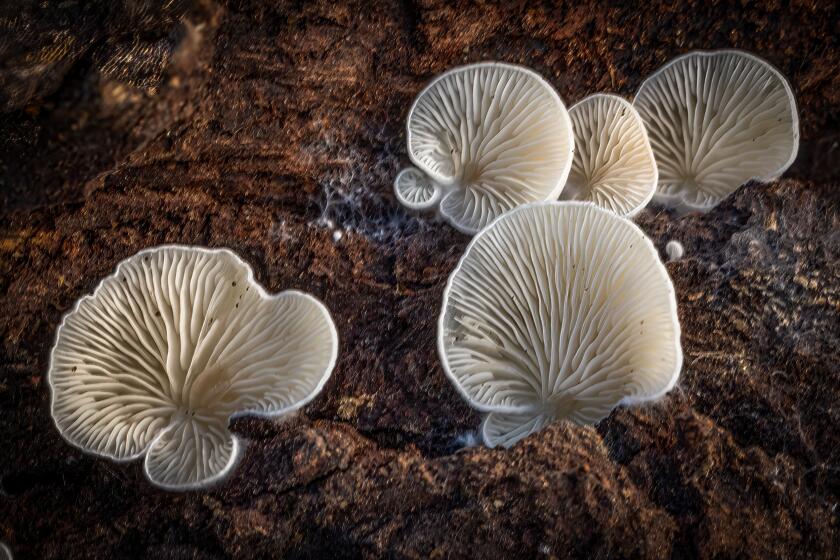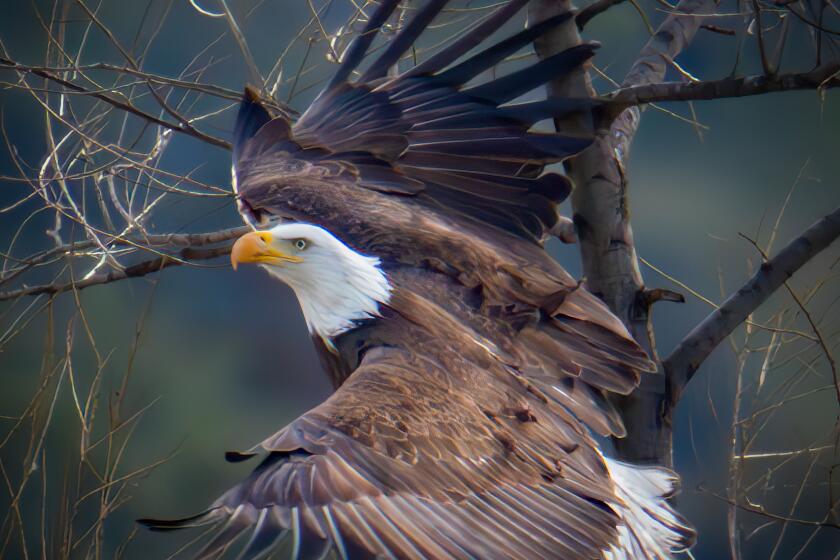On the avian food chain, Cooper’s hawks hover high
The quiet of a Sunday morning was jolted by the sudden explosion of the quail flock that had been leisurely enjoying my garden seed feeder.
The reason soon became apparent.
Right behind the fleeing quail was a magnificent Cooper’s hawk, with flared tail and wings widespread, diving in with hopes of getting a plump morsel. How he missed, I don’t know, but no quail were injured in the telling of this story.
This was not my first encounter with a Cooper’s hawk looking for an easy meal.
During a spring photo watch of a western bluebird nest, I had set up a blind to get close enough for good pictures as parents came and went and fledglings made occasional appearances. While nodding off between shots, I heard a strange clatter and looked out to see a Cooper’s hawk sitting on the roof of the nest box, not more than 15 feet away.
Apparently, he had been observing the comings and goings of the adult bluebirds and decided this might be an easy meal. It also gave me a great chance to get the photo that accompanies this story.
Cooper’s hawks are all-year residents of San Diego County, most common in urban eucalyptus groves as well as our oak woodlands. They are frequently seen in lowland and foothills canyons and in the region’s urbans areas, but populations of this beautiful hawk are high into the county’s oak woodlands, as well. Numbers begin to drop off at higher elevations, with even fewer found in desert areas.
This is a medium-sized hawk native to North America with a range that extends from Southern Canada to Southern Mexico. They stand about 15 inches high, with a wingspan of around 30 inches. Like most raptors, the male is the smaller of the species, sometimes significantly smaller that the females.
Hawk watchers can identify this beautiful bird by looking for its large, rounded wings, long, rounded tail with thick, alternating bands.
The bird has blue-gray feathers on the back and upper wings, with a rusty, reddish breast peppered with white bars.
Despite missing his attempt at capturing a quail, the Cooper’s hawk is considered one of the most skilled fliers because of its ability to thread through trees while in pursuit of other birds.
As you may have already guessed, the Cooper’s hawk diet mainly consists of medium-sized birds such as starlings, doves, pigeons, robins, jays, chickens and quail. They often attack by rapidly approaching prey, flying low to the ground, and staying hidden behind a shrub or bush. At the last moment, the hawk will pop over the obstruction to surprise the unsuspecting prey on the other side.
The Cooper’s hawk’s preference for medium-sized birds creates a delicate, if not totally dangerous situation for the smaller, male hawk.
This has made the males attentive to the mood of the female hawks. They will often listen for an approving call from the female before approaching. Cooper’s hawk males are also the family nest builders and food providers to nesting females and nestlings before they fledge.
These birds nest high in trees, but within the canopy. In San Diego County, they seem to prefer nesting in eucalyptus trees but also nest commonly in oaks and occasionally in riparian willows. Nesting season is generally between late March and mid-June.
Birders may be challenged to correctly identify the Cooper’s hawk because of its similarity to the sharp-shinned hawk. Expert birders will often debate for hours over the correct identification of a passing bird.
While coloration is similar, the sharp-shinned is smaller and, if you do get a good look, has a squared tail, versus the rounded tail of the Cooper’s. Head size is another indicator, with the Sharpy having a smaller head compared with its body size.
Cooper’s hawks also have thicker and shorter legs, versus the thin and longer legs of the sharp-shinned. The darker crown feathers also offer a clue, with the darker color continuing down the back of the neck creating more of a hood, while the Cooper’s appears more as a cap.
While the red-tailed hawk is the most common hawk in San Diego County, if you notice an absence of birds at your feeders, look around closely, because there will likely be a Cooper’s somewhere nearby.
Cowan is a freelance writer based in Escondido. Email him at BirdandErnie@gmail.com or follow him at erniesoutdoors.blogspot.com.
Get U-T Arts & Culture on Thursdays
A San Diego insider’s look at what talented artists are bringing to the stage, screen, galleries and more.
You may occasionally receive promotional content from the San Diego Union-Tribune.










